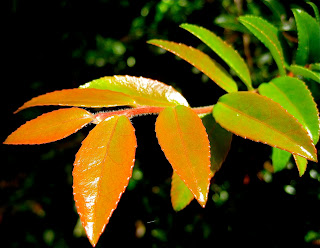Common yarrow (Achillea millefolium) is in the Aster family (Asteraceae).
Yarrow is a wondrous weed with so many benefits the list seems endless. It is rhizomatous so it prevents erosion and is wonderful mixed in meadowy lawns. Growing yarrow repels beetles, ants and flies but attracts butterflies and predatory insects so it benefits gardens. It grows well in poor soil and is drought tolerant but can become invasive if not kept under control. The leaves are nutritional additions to the soil and can be used as an activator to speed up composting. Medicinally the leaves can be chewed into a poultice and applied to wounds to stop bleeding. There is limitless medicinal potential with the entire plant but it should been noted that extended use may cause allergic skin rashes and sun sensitivity in some people so use it only when you need it.
Although many people prefer to identify any given plant by its flowers, I prefer to focus on the leaves. Leaves can often be more revealing than flowers in plant identification and are usually observable much longer than the flowers. In the case of yarrow, focusing primarily on the flowers can lead to misidentifying the plant. There are a variety of species with similar inflorescences as yarrow but the leaves provide the best verification.
Yarrow has beautiful grey-green, lance-shaped leaves that are divided into segments which are further divided into fringe to create a feathery look. They grow directly from the stem with no petiole (leaf stem). The leaves are mostly basal but are alternate on the leafy flowering stem. The leaves lowest on the stem are the largest (up to about 6" long).
Yarrow is native and introduced throughout North America and grows in dry to moist well-drained soils in meadows, roadside and disturbed areas from low to high elevations.
REFERENCES:
USDA Fact Sheet
Plants for a Future
Flora of the Pacific Northwest by Hitchcock & Cronquist
Plants of the Pacific Northwest Coast by Pojar & Mackinnon
 |
| Yarrow displays feathery alternate stem leaves |
Although many people prefer to identify any given plant by its flowers, I prefer to focus on the leaves. Leaves can often be more revealing than flowers in plant identification and are usually observable much longer than the flowers. In the case of yarrow, focusing primarily on the flowers can lead to misidentifying the plant. There are a variety of species with similar inflorescences as yarrow but the leaves provide the best verification.
Yarrow has beautiful grey-green, lance-shaped leaves that are divided into segments which are further divided into fringe to create a feathery look. They grow directly from the stem with no petiole (leaf stem). The leaves are mostly basal but are alternate on the leafy flowering stem. The leaves lowest on the stem are the largest (up to about 6" long).
The flowering stem can grow to a couple of feet tall. Flowers bloom in terminal clusters of flat to rounded umbels. The bracts below the entire inflorescence are less than a half an inch long. The ray flowers (radiate around the margins of each floret) are white to pinkish and are as long or longer than they are wide. The disk flowers (bunched in the center) are cream-colored. All flowers are perfect (both male and female) and fertile. These flowers fruit into achenes that are dispersed by wind.
 |
| Ray flowers are white-pinkish, button flowers are creamy. |
Yarrow is native and introduced throughout North America and grows in dry to moist well-drained soils in meadows, roadside and disturbed areas from low to high elevations.
REFERENCES:
USDA Fact Sheet
Plants for a Future
Flora of the Pacific Northwest by Hitchcock & Cronquist
Plants of the Pacific Northwest Coast by Pojar & Mackinnon











